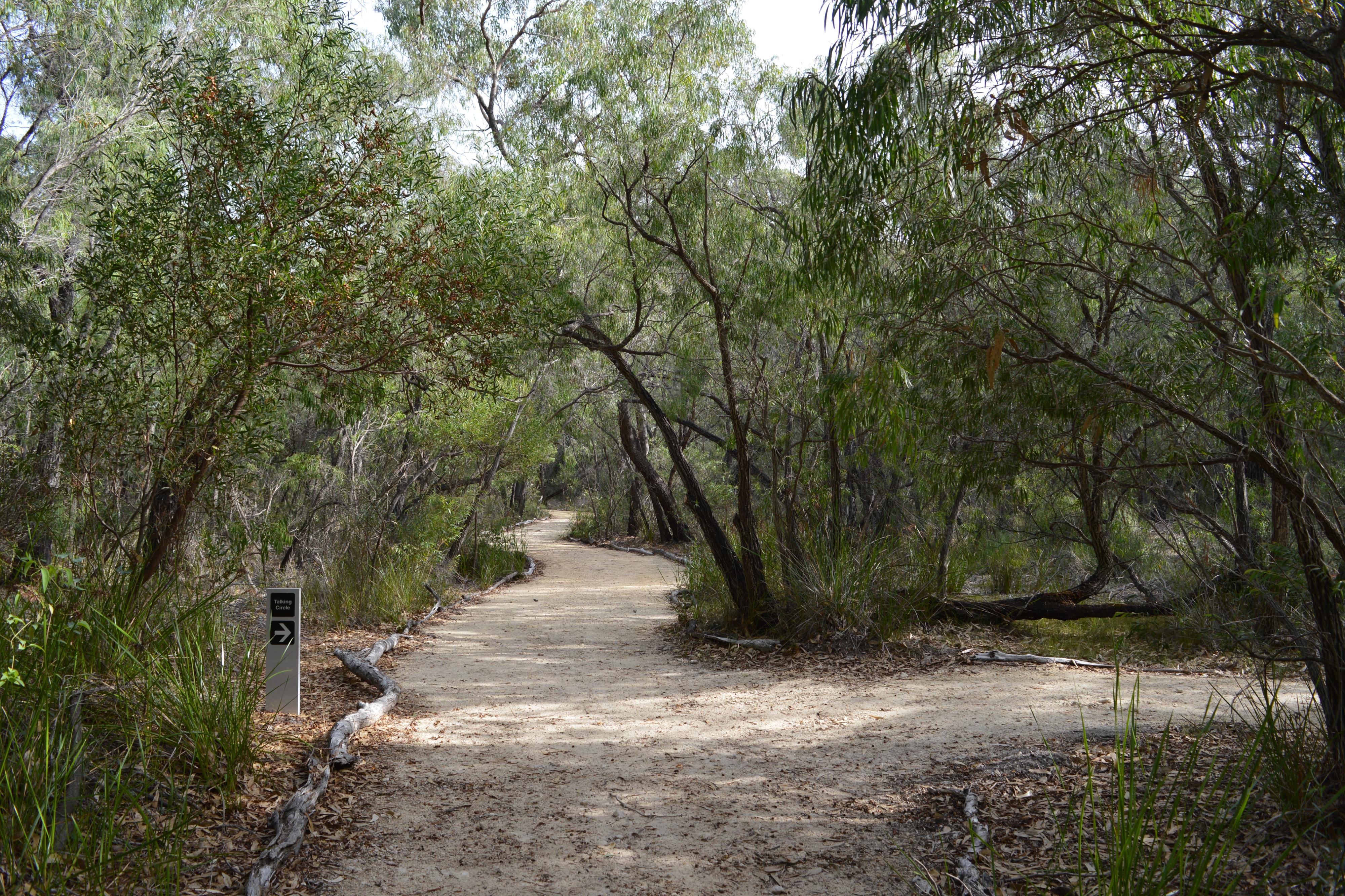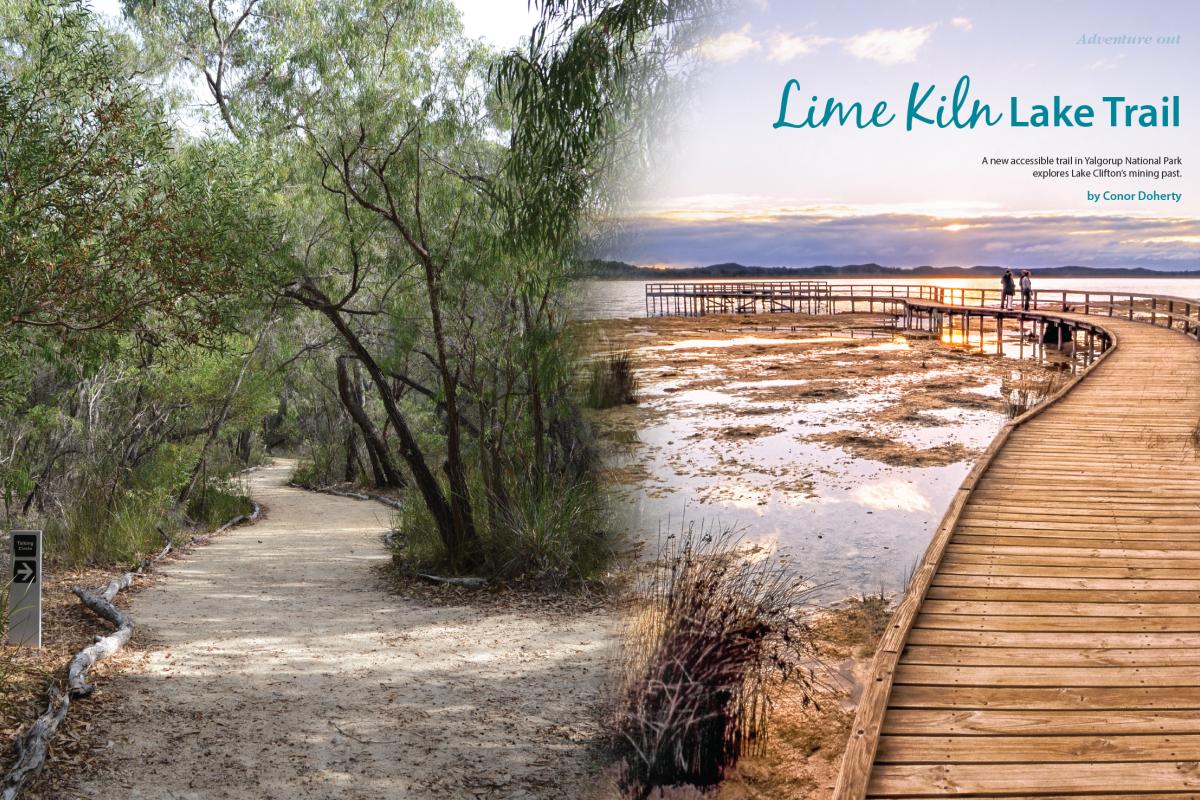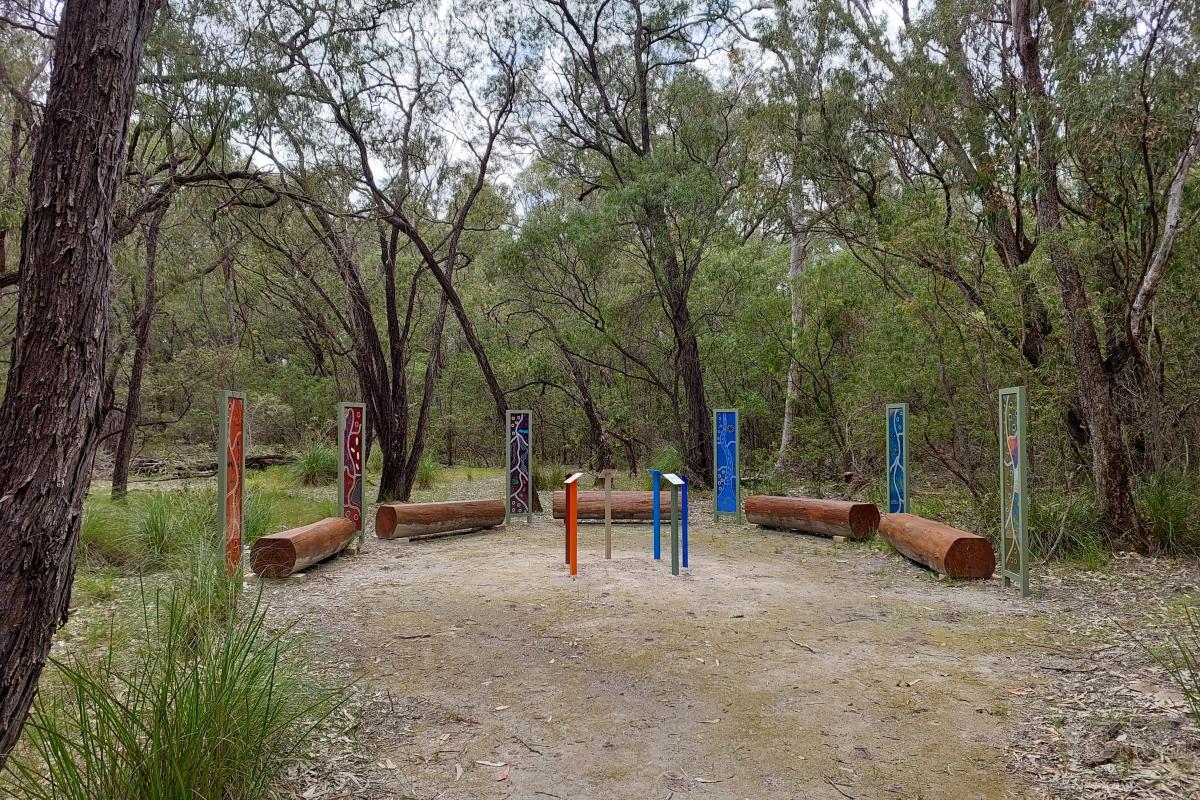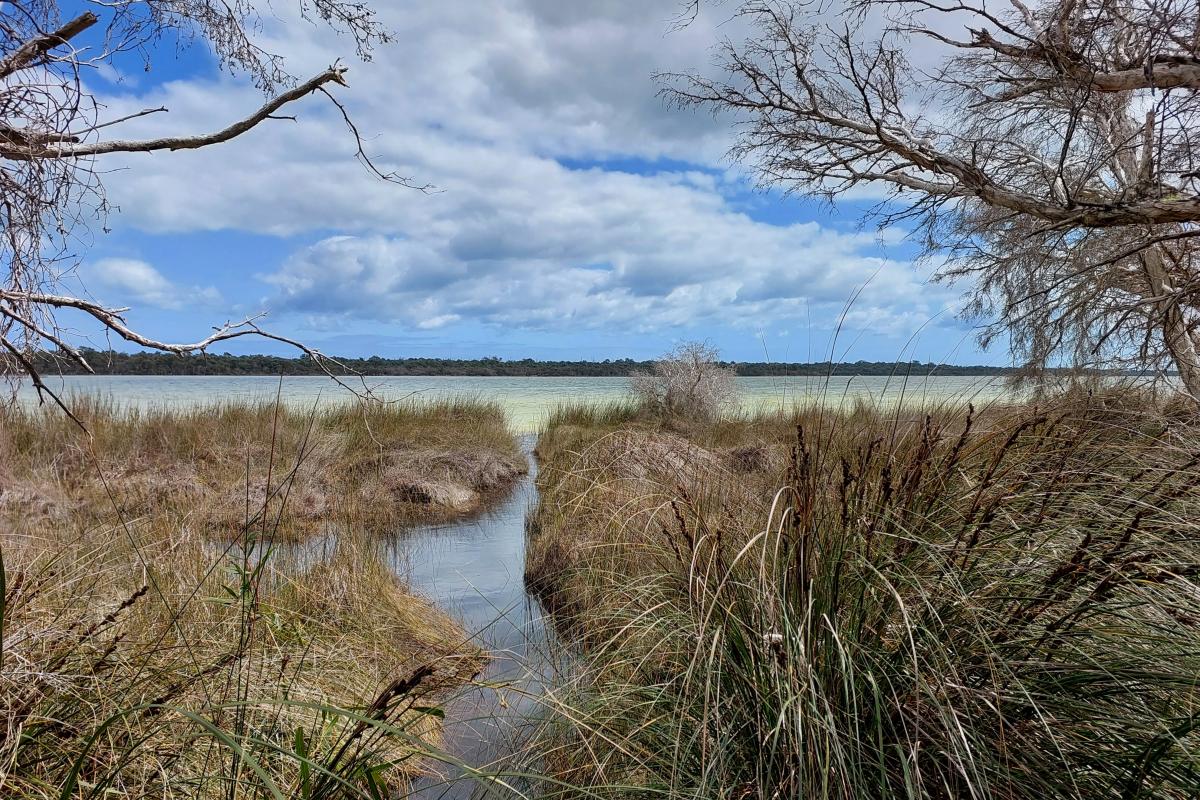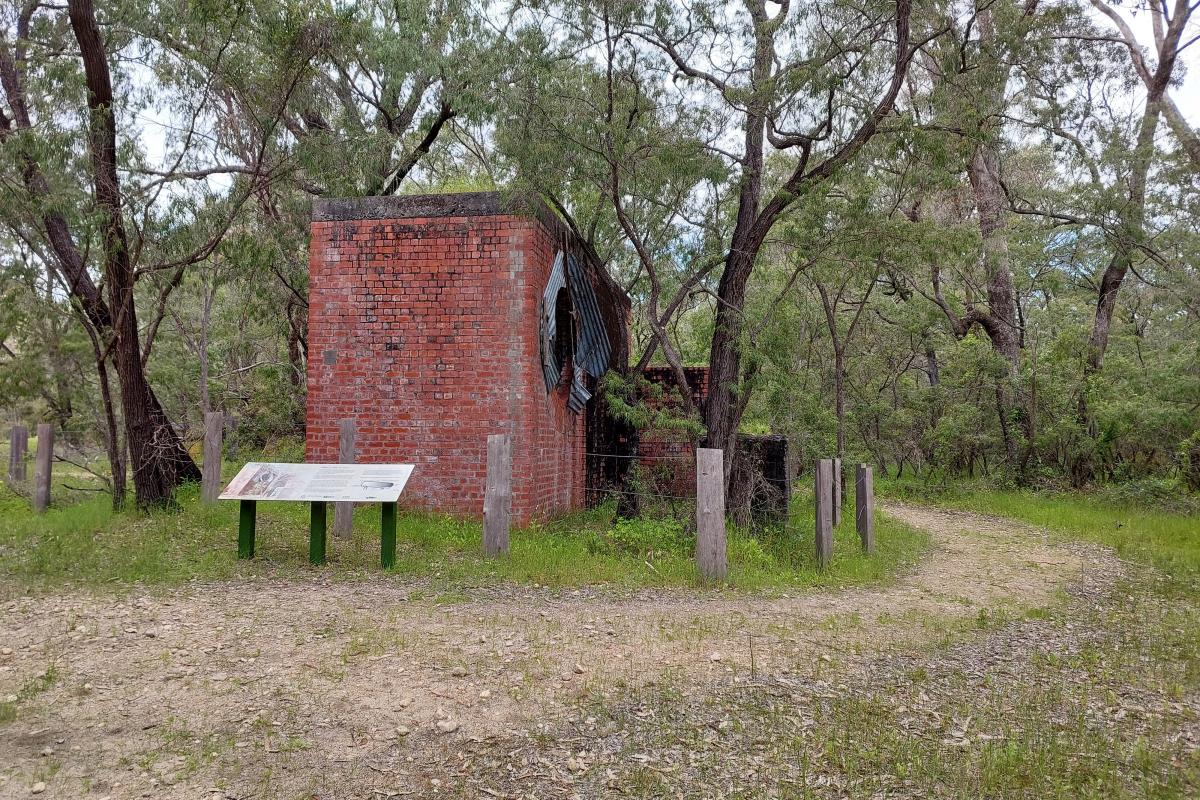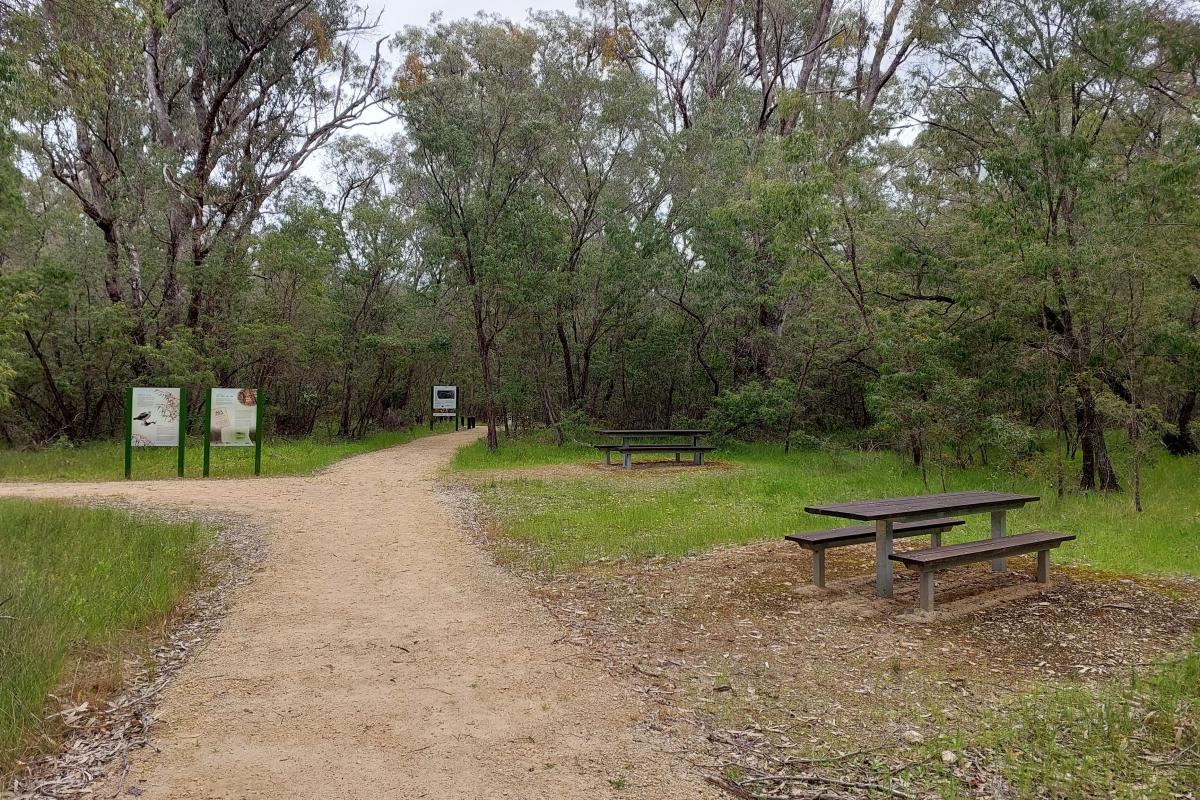Adventure out - Lime Kiln Lake Trail
An accessible trail in Yalgorup National Park explores Lake Clifton's mining past.
This article appeared in LANDSCOPE magazine Spring 2022.
Until recently, I only knew of Yalgorup National Park, south of Mandurah, for the Lake Clifton thrombolites - the living rock-like formations found in only a few places in the world.
On hearing of a newly opened, short walking trail and picnic area further south at the site of the Historic Lake Clifton Lime Kiln, I was keen to visit, walk the trail and learn more about the area’s interesting and important history.
The historic Lake Clifton Lime Kiln picnic area and Lime Kiln Lake Trail are a short, 10-minute drive south of the iconic thrombolites in Yalgorup National Park. Located on the traditional Country of the Bindjareb Noongar people, the site is home to the remains of an original lime kiln that was part of the Western Australian Portland Cement Company’s lime project that operated between 1919 and 1923.
From 1919, lime marl was pumped from the bottom of Lake Clifton through a series of pipelines into settling ponds before being transported to cement works in Burswood - initially by truck then later via a railway line opened in 1921.
The lime kiln is one of the only remaining structures from the former townsite of Lake Clifton, developed as a company town by the WA Portland Cement Company in 1920.
The kiln itself was constructed onsite in 1922, allowing lime to be processed prior to transport. The kiln’s operation was short-lived as it was discovered the lime marl from deeper in the lake was of unsuitable quality for cement manufacture and the mine closed in 1923.
How it came about
President of the Lake Clifton Herron Residents Association, Jenny Rose, stumbled across the abandoned kiln while walking in the area in 2015 and, following some research, realised its history and significance were too important to remain hidden.
A management plan had previously flagged the site in the mid-1990s and a concept plan for a trail prepared in 2002, were able to form the basis of new plans for the lime kiln site.
Jenny Rose and the Department of Biodiversity, Conservation and Attractions worked closely to source grants and funding partnerships and encourage community involvement to bring the vision to reality.
This hard work saw a picnic area including picnic tables, parking and interpretive signage open in May 2019, and the second stage of the project - the 1.2-kilometre-return Lime Kiln Lake Trail and talking circle - in May 2022.
Lime Kiln to lake
While the picnic area would undoubtedly have made for a very pleasant place to take a break while visiting, the Lime Kiln Lake Trail makes it a worthy destination in its own right.
As I meandered along the gentle, Class 2 trail among the peppermint and melaleuca trees, I was struck by how calm and serene the location was.
The area has naturally regenerated over the last 100 years, however evidence of the settling/drying ponds and pipeline remain, and remnants of infrastructure can be seen at points along the trail.
About 100 metres along is the turnoff to the talking circle—a small clearing flanked with wooden seating and six stunning artworks by local artists Gloria and Karrie-Anne Kearing that represent the six Noongar seasons.
Continuing towards the lake, the trail passes through the former settling ponds. Those with a keen eye will notice the raised pond banks forming a distinct, square pattern.
The trail is accessible for people in wheelchairs or prams and there are several spots along the way with benches - perfect for taking a break or simply taking in your surroundings.
On the May morning of my visit, I was excited to discover white bunny orchids (Eriochilus dilatatus) in bloom and am told the area is a prime location for wildflower spotting in spring.
The current trail ends just short of the lake’s edge, but the good news is that the Lime Kiln Lake Trail is only going to get better with plans for a viewing deck that will offer outstanding views across Lake Clifton.
The lake still holds vestiges of its short but significant mining past - a row of sticks that were used to moor pontoons protrudes across the lake and with the water level low on my visit some remnants of the dredging operation were visible along the shoreline.
From above, the irreversible damage to the lakebed caused by the dredging can still be seen.
Lake Clifton is now a Ramsar protected wetland - one of Australia’s 65 Ramsar sites. It is a breeding, moulting and feeding ground for many species of endemic and migratory birds, so bird lovers should keep their ear to the ground for news of Lime Kiln stage three which will include a viewing deck at the lake’s edge.
More history
The Lake Clifton Herron Residents Association website and the Waroona Historical Society hold a wealth of information about the history of the lime kiln site and mining venture, the former Lake Clifton gazetted townsite and the natural attractions of the area.
Do it yourself
- Where is it? Yalgorup National Park stretches from just south of Mandurah to north of Myalup and covers 12,888 hectares.
- The lime kiln site is located off Newnham Road, adjacent to Old Coast Road, east of Lake Clifton.
- Planning your trip: The historic Lake Clifton Lime Kiln is about a 90-minute drive from Perth, a 30-minute drive from Mandurah, and a 45-minute drive from Bunbury.
- Facilities: Parking and picnic tables are available off Newnham Road.
- There are no toilet facilities at this place and rubbish must be taken away with you.
